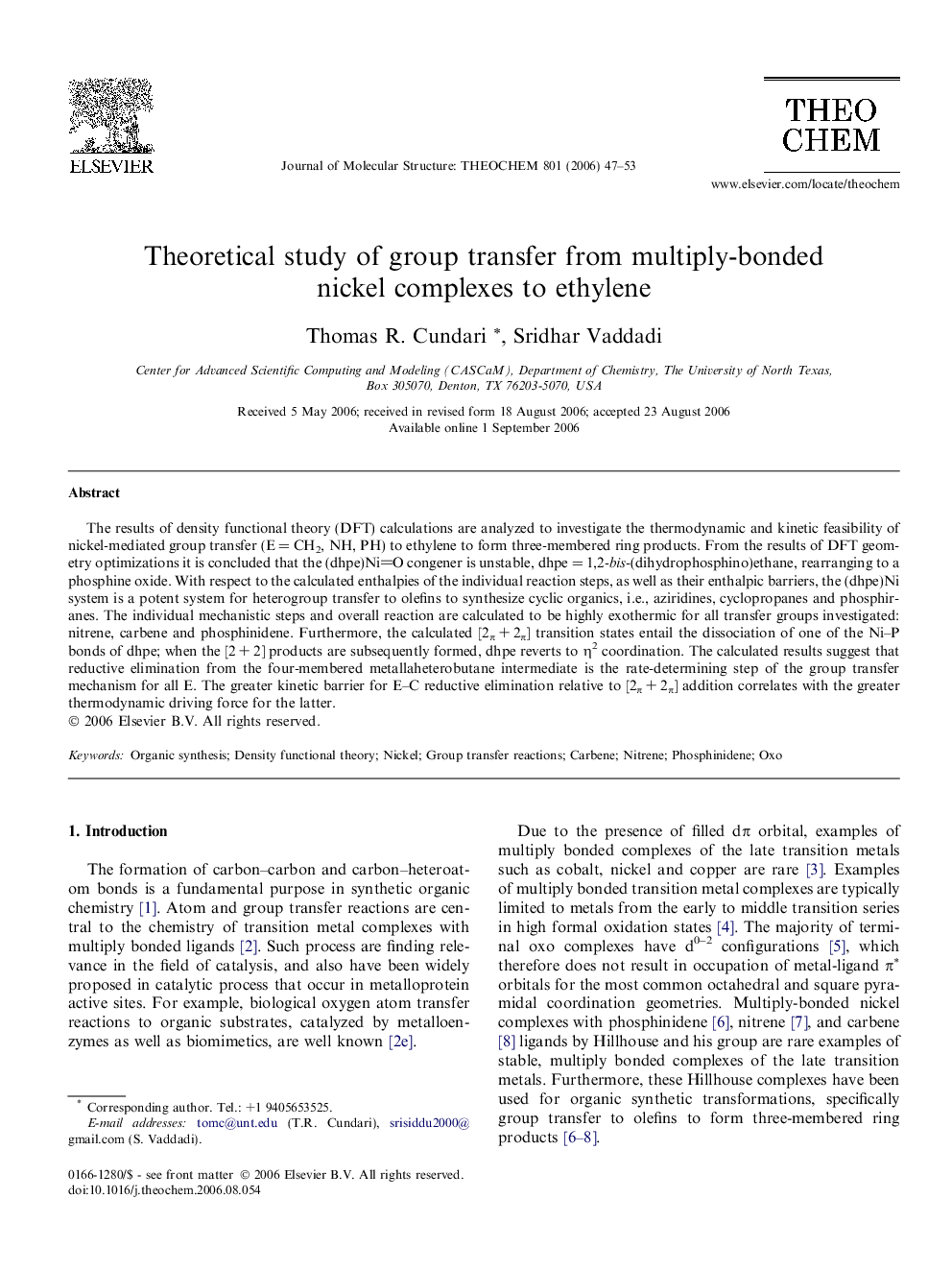| Article ID | Journal | Published Year | Pages | File Type |
|---|---|---|---|---|
| 5418918 | Journal of Molecular Structure: THEOCHEM | 2006 | 7 Pages |
Abstract
The results of density functional theory (DFT) calculations are analyzed to investigate the thermodynamic and kinetic feasibility of nickel-mediated group transfer (E = CH2, NH, PH) to ethylene to form three-membered ring products. From the results of DFT geometry optimizations it is concluded that the (dhpe)NiO congener is unstable, dhpe = 1,2-bis-(dihydrophosphino)ethane, rearranging to a phosphine oxide. With respect to the calculated enthalpies of the individual reaction steps, as well as their enthalpic barriers, the (dhpe)Ni system is a potent system for heterogroup transfer to olefins to synthesize cyclic organics, i.e., aziridines, cyclopropanes and phosphiranes. The individual mechanistic steps and overall reaction are calculated to be highly exothermic for all transfer groups investigated: nitrene, carbene and phosphinidene. Furthermore, the calculated [2Ï + 2Ï] transition states entail the dissociation of one of the Ni-P bonds of dhpe; when the [2 + 2] products are subsequently formed, dhpe reverts to η2 coordination. The calculated results suggest that reductive elimination from the four-membered metallaheterobutane intermediate is the rate-determining step of the group transfer mechanism for all E. The greater kinetic barrier for E-C reductive elimination relative to [2Ï + 2Ï] addition correlates with the greater thermodynamic driving force for the latter.
Related Topics
Physical Sciences and Engineering
Chemistry
Physical and Theoretical Chemistry
Authors
Thomas R. Cundari, Sridhar Vaddadi,
